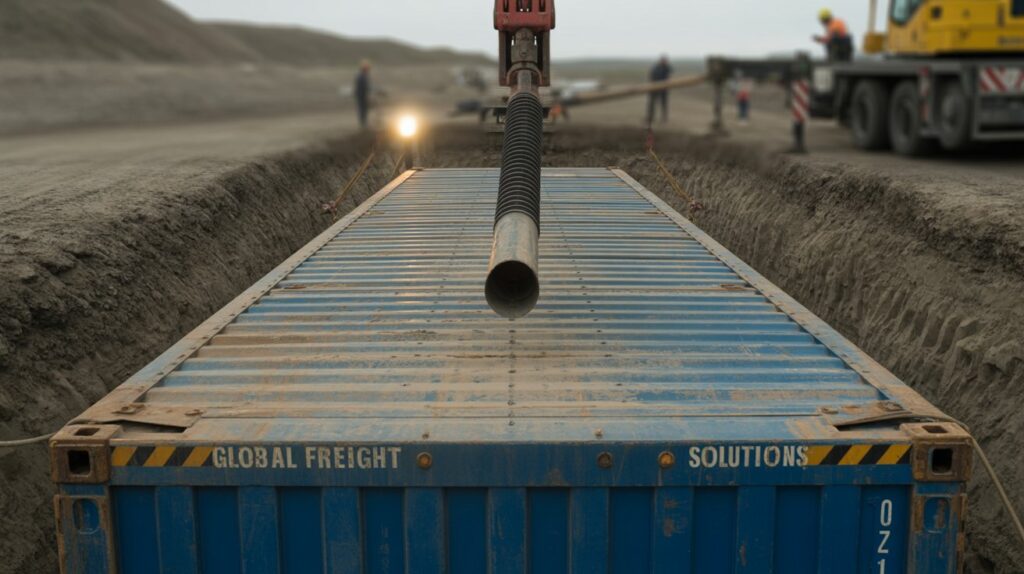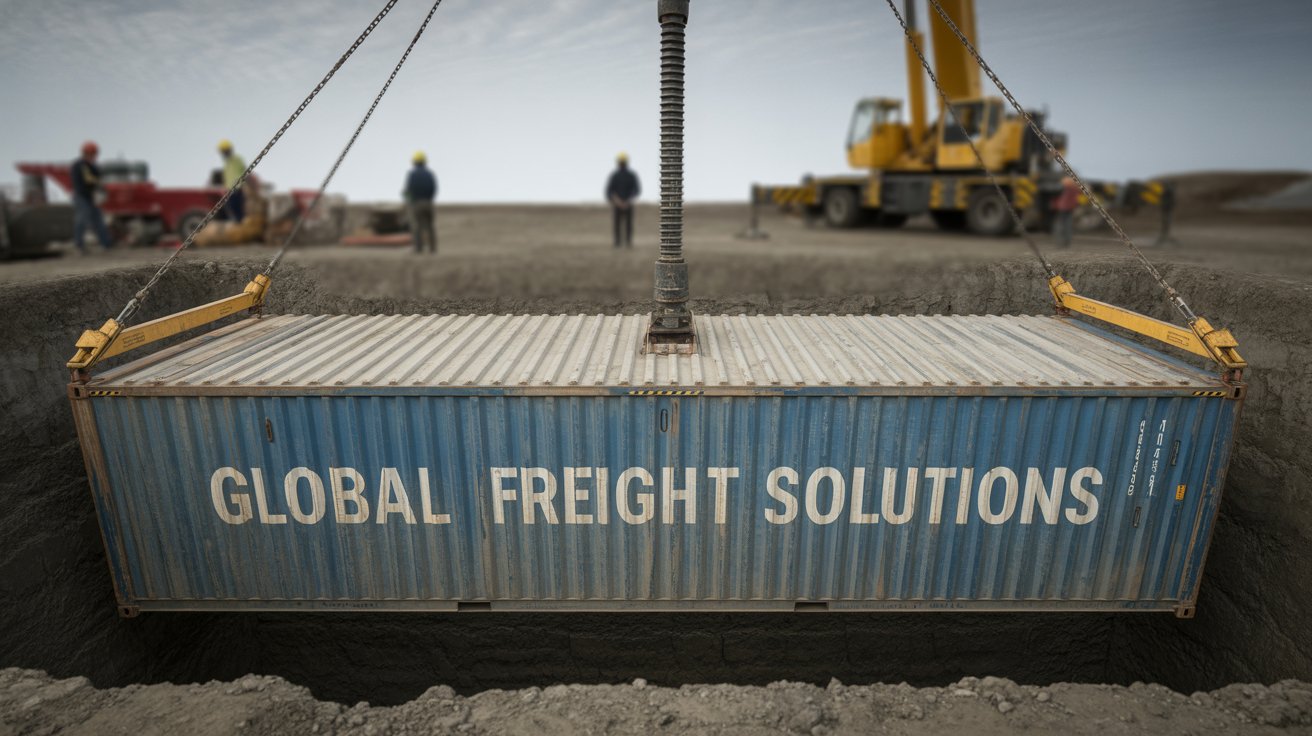Have you ever considered what it might take to transform a humble shipping container into a secure bunker? Turning these robust metal containers into a safe haven is an intriguing challenge, but one of the first questions you might ask is: What are the cost considerations involved in building a shipping container bunker? Whether you’re motivated by a desire for a unique living space or an interest in emergency preparedness, understanding the financial aspects is crucial.

Understanding the Basics of Shipping Container Bunkers
Before diving into costs, it’s important to get a grasp on the fundamentals of shipping container bunkers. A shipping container bunker is essentially a fortified structure made using one or more shipping containers. These structures are designed with safety in mind, aiming to withstand a variety of scenarios from natural disasters to security threats.
Why Consider a Shipping Container Bunker?
There are several reasons why you might choose a shipping container for your bunker project. Firstly, shipping containers are durable and designed to hold heavy loads. Secondly, they are relatively easy to acquire as surplus containers from shipping companies once they are deemed no longer suitable for shipping. Moreover, with the right planning and modifications, a shipping container can be transformed into a comfortable and secure living space.
Breakdown of Costs Involved
Building a shipping container bunker involves several cost components. Knowing what to budget for can help you manage your project more effectively.
Cost of the Container Itself
The starting point for any container bunker is, naturally, the container. The cost of a shipping container can vary widely based on size, condition, and location. Typically, prices range from about $1,500 to $5,000 for a used container, while new ones could cost more.
| Condition | Estimated Cost Range |
|---|---|
| Used Container | $1,500 – $5,000 |
| New Container | $3,000 – $6,500 |
Factors affecting these prices include the shipping location, availability, and whether the container has been refurbished or modified in any way.
Site Preparation Costs
Once you have your container, preparing the site is another critical step. This includes leveling the ground, laying a foundation, and ensuring proper drainage around your bunker. Site preparation can be quite variable, with costs ranging from a few hundred to several thousand dollars.
Foundation Options
A solid foundation is essential for the longevity of your bunker. Options range from simple gravel beds to full concrete slabs. Here are some rough estimates:
- Gravel Bed: $500 – $1,000
- Concrete Footing: $1,000 – $3,000
- Concrete Slab: $3,000 – $6,000
Modifying the Container
Transforming a metal box into a livable space requires substantial modifications. These can range from cutting and reinforcing openings for doors and windows to installing insulation and ventilation systems. Modification costs can go from $5,000 upwards, depending on the complexity and quality of the work.
Interior Finishing
You’ll need to consider what kind of interior finish you desire. Basic necessities like drywall, flooring, and paint can already add up. More luxurious finishes will naturally increase the cost. Expect basic finishing to cost anywhere from $5,000 to $10,000 or more for a premium setup.
Essential Utilities
No bunker is truly functional without the necessary utilities. This includes electrical wiring, plumbing, and potentially a septic system if you’re located off-grid. Utility installation is often one of the most expensive aspects of building a bunker, generally costing between $10,000 and $30,000.
Off-Grid Systems
If you plan to disconnect from traditional utilities, investing in solar panels or a rainwater collection system might be essential. These systems can be expensive initially but could save money in the long run:
| System Type | Estimated Cost Range |
|---|---|
| Solar Panels | $5,000 – $20,000 |
| Rainwater Collection | $2,000 – $5,000 |
Security Measures
Adding extra features for security is optional but advisable. These can include reinforced doors, surveillance cameras, and security alarms. Budgeting $2,000 to $5,000 for this aspect will add peace of mind.
Permits and Inspections
Don’t forget the often-overlooked cost of permits and inspections. Requirements vary widely by location, so it’s wise to consult local regulations early in your planning process. Costs for permits and inspections can be around $1,000 to $3,000.
Factors Influencing Costs
Several factors can influence the overall cost of your project. Understanding these can help you make more informed decisions.
Location and Accessibility
The price of shipping containers and construction materials can differ significantly depending on your location. Additionally, the accessibility of your site, such as its proximity to supply sources or skilled labor, can affect transportation and installation costs.
Container Condition and Size
While larger or newer containers might require less repair, they will typically cost more upfront. Used containers are cheaper, but they might necessitate additional work to ensure they are structurally sound.
Market Fluctuations
Prices for metal and other construction materials can fluctuate based on market conditions. This volatility can impact your project’s budget, making it essential to lock in pricing where possible.
Saving Money on Your Bunker
Building a shipping container bunker doesn’t have to break the bank. With some strategic planning and smart choices, you can reduce your costs significantly.
Do-It-Yourself Opportunities
If you’re handy with tools, consider tackling certain parts of the project yourself. Painting, basic carpentry, or installing DIY security systems can save you money. Just make sure that any work you undertake complies with local building codes.
Sourcing Materials
Look for recycled or second-hand materials for finishes and utilities. Online marketplaces or salvage yards can be treasure troves of affordable artefacts perfect for your project.
Prioritizing Needs Over Wants
While it’s easy to get carried away with luxury finishes and amenities, focusing on essential requirements can keep your budget in check. Decide on non-negotiables early, and enjoy adding more comfortable features over time as your budget allows.

Final Thoughts on Building Costs
Building a shipping container bunker is not just a financial investment, but also a strategic one for your safety and wellbeing. By understanding the cost considerations and planning accordingly, you can create a structure that serves your needs and provides peace of mind without unnecessary financial strain. Approaching the project with a flexible mindset, alongside a clear understanding of your budget constraints, will help you make sensible design choices.
Additional Considerations
While costs are a primary concern, other considerations can impact the quality and satisfaction you derive from your bunker.
Design Flexibility
Shipping containers provide a unique opportunity for creativity, allowing multi-level designs or external modifications. Balance creativity with functionality to maximize space utilization.
Sustainability
Consider the environmental impact of your project. Using sustainable materials and renewable energy sources doesn’t just cut costs long-term—it contributes positively to the environment.
Long-term Maintenance
Plan for the future by considering the long-term maintenance costs of your bunker. Regular inspections and maintenance will ensure its longevity and functionality over the years.
By carefully planning, you can create a shipping container bunker that meets both your needs and budget, providing a lasting space of safety, comfort, and security for years to come.

